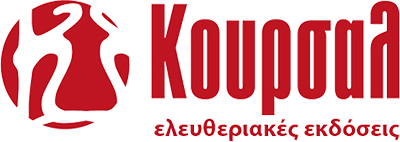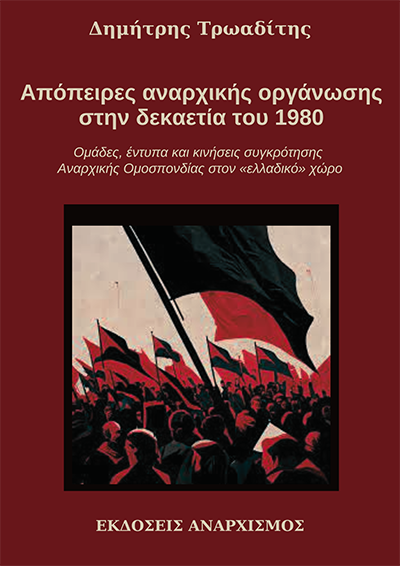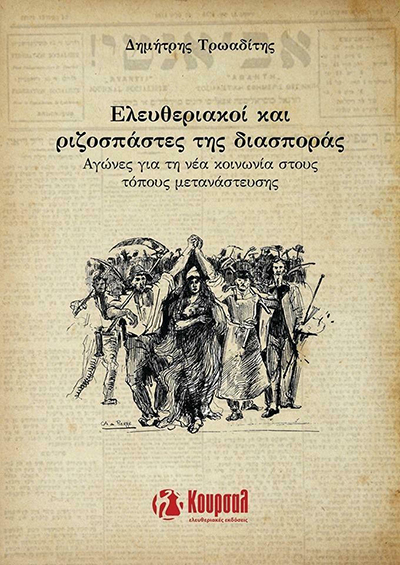*This article was written by using different sources including trotskyist ones.
Agis Stinas was born in the island of Corfu (nort-western Greece) in 1900. His real name was Spyros Priftis. He started involved in revolutionary politics and action following the October Revolution of 1917, after he was encouraged by the local doctor, who had known Lenin in Switzerland and felt that for the young Stinas the best introduction to Socialism would be the reading of Hegel’s Logic and Goethe’s Faust.
Stinas became a founding member of the Greek Socialist Workers’ Party (SEKE) which changed its name to Communist Party of Greece (KKE) in 1924, and played a leading and important role in organising workers and also in printing and circulating clandestine magazines, bulletins and leaflets.
Initially hostile to the ideas of trotskyism and the Left Opposition, Stinas was eventually convinced by the ludicrous consequences of the Stalinist 3rd Period when it was put into action in Greece at the beginning of the 1930s. Together with Pouliopoulos (who in 20s before been expelled was the general secretary of KKE) became one of the leaders of the Greek trotskyist movement, and was specially mentioned in the resolution «A salute to our living martyrs and our heroic dead», adopted at the 1938 Founding Conference of the Fourth International.
During the war, isolated from all contact with any trotskyist group outside Greece, Stinas and his group argued against the defence of the USSR (although still believing that the USSR was a degenerate workers’ state), and argued that there was nothing progressive in any national struggle whatsoever.
His group, the Communist Internationalist Union (KDE), remained outside the stalinist-dominated massive EAM/ELAS liberation movement believing that the biggest revolutionary task was to make the war a social revolution against the national dominant classes. KDE participated in the July 1946 reunification of the Greek trotskyist movement, but in Spring 1947 Stinas broke out any ties and links with trotskyism and leninism. He shortly later became the principal representative in Greece of the «Socialism or Barbarism» current (Castoriadis etc.), and towards the last almost 20 years of his life was moving closer and closer to Anarchism.
Stinas’ political evolution is interesting as he was an extremely capable organiser with boundless energy.
For those who do not know about Greek 20th century political and especially left and revolutionary history, in his autobiography Stinas provides ample material to explain the series of coups and counter-coups which punctutated the first 40 years of the 20th century.
Also, in his autobiography Stinas concentrates much of his discussion of the 1920s on the Communist Party of Greece (KKE) intervention into the working class. The workers Stinas refers to are electricians, tramway workers, weavers and tobacco workers. The genuinely industrial working class is never mentioned, actually because it barely existed. In the early decades of the 20th century the Greek society was crushed by the exploitative weight of British, French, Italian and Turkish imperialism.
Another aspect of the 1920s is the relatively shallow base of the Communist Party of Greece. It is apparent from Stinas’ description of the opportunism of its leadership that, despite its formal adherence to the «‘21 Conditions»’ of the Second Congress of the Comintern, the leadership of KKE never really felt bound by this, and the membership never understood what they meant. This made the party easy meat, first for the Zinoviev-inspired «bolshevisation» of 1925, then for a brisk stalinisation in 1928-30.
Stinas spent a large amount of time between the 1920s and ‘40s in prison. Tracked by the secret police, he was either in hiding or in jail. The stalinised Communist Party of Greece controlled the political wings of the prisons. Under their instructions, the trotskyists, the very few anarchists (sush as Skaleos) and some left communists were always placed closest to the communal toilet, and were regularly beaten by the prison staff. During the war, when conditions were particularly difficult and prisoners were dying of starvation in Stinas’ prison, 90 to a cell built for 15, the stalinist prisoners were living it up on full rations in far more comfortable conditions.
Also during 40s OPLA (the stalinist police type quards) amongst many trotskyists and left communists killed a few anarchists sush as K. Speras.
From the end of the 1930s, Stinas was in the same prison (Acronauplia) as Pouliopoulos. They shared a cell, and eventually, in June 1940, organised a series of debates between their two organisations (the Communist Internationalist Union and the Unified International Communist Organisation) in the prison. These discussions were primarily verbal, but they also wrote a series of documents which were circulated, hand-written, inside the jail. Stinas claims that Pouliopoulos’ group kept the material and refused to publish his documents, of which he only obtained copies in the 1970s.
After leaving trotskyism and leninism by 1947 andin during 50’s and 60s until the miltary dictatorship in 1967 Stinas was the most prominent figure in a group called «Ergatiko Metopo» («Workers’ Front») sharing council communist and anarchist ideas and publishing a magazine eith the same name. In 1974-1977 Stinas was in the editorial group of anarchist magazine-grouping called «Sosialismos I Varvarotita» («Socialism or Barbarism»).
In the english speaking countries and Europe, the history of the Greek revolutionary movement, the murderous activity of the Greek Communist Party, and also the sacrifices of hundreds killed by the Stalinists, or others like Stinas, who were forced to live in the most extreme conditions for many years, are still largely unknown.
Stinas died in 1987.




